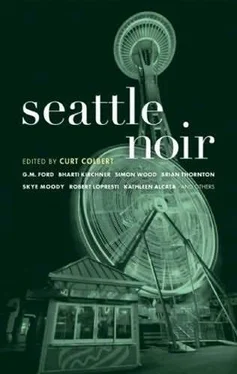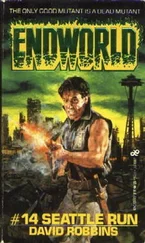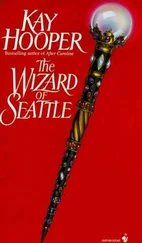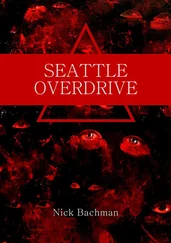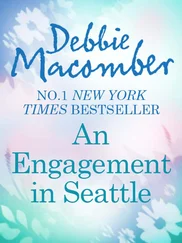“I meant,” McKean persisted, “do you know something about red tide in the murder of Erik Torvald?” At 6'6", McKean had a way of looking imperiously down his long nose at people, and our height above Squalco on the deck amplified this effect until the man flinched. He cast his eyes aside again, and then bent and picked up the bucket with both gloved hands, grunting at its weight. He walked up the mud bank to a dented old blue pickup truck, where he huffed the bucket onto the waiting lowered tailgate, and then said to us, “Gotta go. Got plenty-a hungry mouths to feed.” He closed the tailgate, came back in a hurry, tied the boat’s bowline to the trunk of a small Douglas fir tree, and turned to go. As he reached his truck door, McKean called to him.
“Interesting case.”
Squalco paused before getting in. “Yeah?”
“Massive dose of red tide poison. Died quick. No trace of shellfish in his stomach contents. Any idea why?”
“No,” Squalco replied without conviction, his eyebrows high and mouth round.
“Red tide poison,” said McKean, “is one of the most toxic substances known; a paralytic toxin. First the tongue and lips tingle, then general paralysis sets in.”
“I gotta go,” said Squalco.
He got in and slammed his door and drove off spraying gravel. Watching him speed down the driveway and turn south on West Marginal Way, McKean shook his head.
“Oh, Frank,” he said with a note of regret. “What has my old pal got himself mixed up in?”
Earlier that morning, I had sat at my computer keyboard in my funky old Pioneer Square writing office, working on a boring piece of medical reporting about a new gene therapy for baldness, when I got the phone call from McKean that put me on this case.
He was at the Seattle Public Health Hospital on Pill Hill. “Kay Erwin’s got an interesting case for us,” he’d said. “A dead man with all the signs of red tide poisoning, but there are reasons to suspect foul play. Wanna follow this one?”
Like always, I’d said, “Sure,” and went to meet him. Writing about the exploits of the brilliant Dr. McKean is how I make my best money these days. I caught up with him at the hospital in epidemiologist Kay Erwin’s office.
Kay is another person of interest to me. She’s a small, cute, pageboy brunette, about forty-five, a bit too old for me to ask on a date, but she always has some piece of news for the medical journalist side of me. White lab-coated, she sat behind her office desk and motioned me into a guest chair with McKean in the other, then launched into a quick update.
“Torvald,” she explained, “was found lying comatose beside his pickup, scarcely breathing. The passerby who found him called for help and Torvald was rushed to our ER, where it became clear he had shellfish poisoning symptoms. They pumped his stomach, worked up a blood sample for toxins, and called me in on the case.”
“That’s when things got interesting,” said McKean.
“Yes,” agreed Erwin. “His stomach contents didn’t contain shellfish. In fact, they matched what was found in his car: the remnants of a McDonald’s Quarter Pounder, fries, and a Coke. But the symptoms and the lab analysis are consistent: a massive dose of saxitoxin.”
“Saxitoxin is about a thousand times more toxic than nerve gas,” said McKean.
“But the most anomalous thing,” said Kay, “is that this case doesn’t coincide with an actual red tide. The only red tide on Puget Sound this year was in August, and it’s now late October. Something fishy’s going on.”
“Or rather,” said McKean, “something clammy.”
After Frank Squalco left, I drove us back to McKean’s labs at Immune Corporation, feeling that a long-enough day had already transpired, but McKean was indefatigable. On the way, noting that it was only 4:15 p.m., he called his head technician, Janet Emerson, and barraged her with concepts for a new project. As I chauffeured him back across the West Seattle Bridge, he bubbled to her about red tide microbes and toxins, and ways and means to create a new treatment for paralytic shellfish poisoning.
“Get some saxitoxin and crosslink it to diphtheria toxoid and inject it into some mice and we’ll make a therapeutic monoclonal antitoxin. What say?” I couldn’t hear Janet’s reply, but knowing the two of them as I do, I had no doubt she was bravely shouldering the new burden of lab work. And I had little doubt that a creation of McKean’s brilliant scientific mind, even one conceived on a drizzly day while riding in my Mustang, would lead to a medicine of great potential. That’s just the way things tend to work out with Peyton McKean.
“I should have started this project long ago,” he explained after getting off the phone. “But shellfish poisoning is so rare, and so rarely fatal, that no big pharmaceutical company has an interest in developing the antitoxin. But I’ll bet Kay Erwin would gladly test my antibodies someday on a desperate patient.”
“Anti what?” I asked, my mind more on a road-raging tailgater than McKean’s conceptualizing.
“Antibodies,” said McKean. “The body’s own natural antitoxin molecules. I’ve just asked Janet to begin preparing some, by immunizing mice against saxitoxin. It’s all pretty straightforward.”
As I drove downtown, he did his best to explain how antibodies could bind saxitoxin molecules and remove them from a victim’s circulation. Eventually, I dropped him off at Immune Corporation’s waterfront headquarters and headed home to my apartment in Belltown with a head full of wonder at how quickly McKean could get involved in a new science project, and doubts as to how all this could solve the case at hand.
Nothing happened for a week or two, but then on a morning that dawned gray and cold, Peyton McKean summoned me to pick him up at his labs and drive to West Seattle to follow a new lead he was exploring. Back on West Marginal Way, McKean pointed me onto Puget Way, which branched off and snaked up the Puget Creek canyon, a damp, fern-bottomed, tree-choked gorge. Up canyon, McKean directed me onto a small moss-covered alleyway that led to a tree-shrouded homesite. The large old house had brick red-painted cedar shingles on its sides, a few of which had dropped loose, a mossy roof with a blue plastic tarp covering a patch where rain had breached the decaying shingles, and a chimney spewing a lazy stream of wood smoke. The hillside yard was home to a jumble of trash, including black plastic garbage bags tossed in the underbrush and overgrown with blackberry brambles. There was a car behind the house without wheels, held up on wooden blocks, and a chaotic pile of alder cordwood next to the porch.
We got out of my car and climbed the mossy concrete steps, but McKean held up a hand and paused to listen. From inside came a slow Native American drumbeat accompanying a male voice singing in a high pitch-a tremulous wail of indecipherable syllables punctuated now and then by unfamiliar consonants: a “tloo” here, a “t’say” there. McKean nodded in thoughtful recognition.
“Lushootseed,” he whispered.
“Lu-what?”
“The local dialect of the Salish language. Beautiful, isn’t it?”
I listened a moment, thinking McKean’s definition of beautiful and mine might vary by a bit, but enjoying the song until it ended with three strong drumbeats.
McKean rapped three times on the weather-beaten door and soon we were greeted by an old, gray, short, and almost toothless lady whose round wrinkled face broke into a broad gummy grin at the sight of McKean.
“Ah!” she cried in a tiny but vibrant voice. “You! After so much time. Welcome!”
She ushered us into a dim, cluttered front room, where a dilapidated couch was occupied by two mongrel dogs that appeared too tired to lift their heads let alone bark and, leaning forward in an overstuffed chair whose arms were losing their stuffing, Frank Squalco, holding a round tambourine-like drum in one hand and a leather-headed mallet in the other.
Читать дальше
